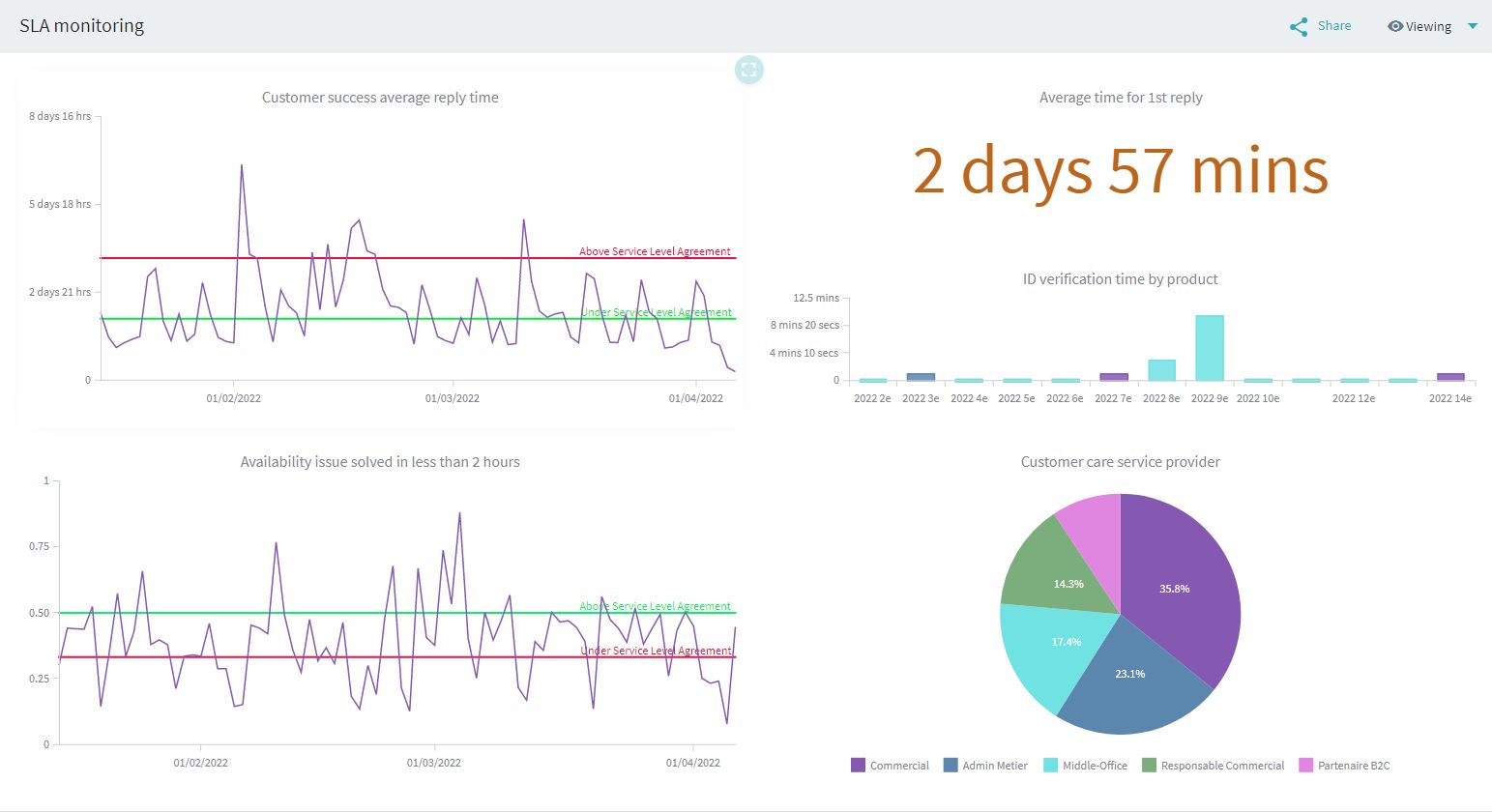How to effectively manage your Service Level Agreement (SLA) with process intelligence?
20/03/2023 , written by Raphaël Brunel
Mar 20 , 2023 read
Whether you are an operational center of excellence, a customer service department, or a Shared Services Center, you are probably familiar with the concept of Service Level Agreement. This type of contract or procedure is used to define the expected level of service when a client contracts with a provider of goods or services. The SLA defines the resolution time in case of incidents, potential penalties for non-compliance, service availability level, response time, computing capacity, and so on…
It is important to establish performance goals for each of them. These goals must be realistic and measurable, so they can be used to evaluate the effectiveness of your SLA. Here’s how you can proceed:
- Define relevant KPIs based on your business objectives, such as:
- First interaction incident resolution rate
- Average incident resolution time
- Customer response time
- Service availability rate
- Number of services involved in incident resolution
- Incident typology
- For each of these KPIs, define functional rules, such as:
- First interaction incident resolution rate: the percentage of incident tickets closed for which the status “processing” is unique.
- Average incident resolution time: time elapsed between opening an incident ticket and closing it.
- Service availability rate: time elapsed between the moment a user receives an “unavailable service” error message when trying to log in and the moment a user log in normally. The availability rate is the percentage of total downtime compared to the total planned service availability time.
- Finally, define thresholds to judge whether the SLA is being met or not, such as:
- Customer response time: less than 4 hours on average and the median response time should not exceed 3 hours.
- Service availability rate: 95% from Monday to Friday between 7am and 8pm.
- Incident typology: 55% of tickets closed after the first intervention.
Process Intelligence for SLA Management
Process mining or process intelligence enables the end-to-end modeling of your business processes, including those supported by multiple tools (see how process intelligence works)
This comprehensive view of processes allows for precise measurement of your SLA’s KPIs. KPIs are calculated from your Information Systems’ data, with calculation rules created directly in the Process Intelligence solution to limit the specific development of your tools. These solutions enable precise measurement of time calculations (business days, holidays, service opening hours, etc.) as defined in contracts/procedures. This great flexibility in parameterization allows for simple initialization and evolution of these KPIs.
Your teams can now have a dashboard that includes all your KPIs and their real-time progress. You are now able to provide value by sharing these dashboards with other teams (marketing, sales, etc.) to improve customer satisfaction, strengthen sales arguments, or enhance service perception, among other benefits.

Alerts and Deviation Predictions
Some Process Intelligence tools also allow you to create alerts when KPIs reach a defined threshold. Initially, it is necessary to define the rules triggering an alert (e.g., if an access request to a tool is not handled within 48 hours of the request, notify one or more users in charge of approvals). The mailing lists and frequency of sending alerts can be adjusted in the tool to finely manage this type of process.
Based on historical data, some solutions like ABBYY Timeline use Machine Learning which allows predicting the outcome of a process (depending on the fields filled in a form, the probability that the request is legitimate can be calculated). Your teams can now focus on the most compliant requests to respond favorably or, conversely, quickly close illegitimate requests.
A Modular Architecture
Using a process mining service allows for a modular architecture, and the technical installation is transparent to your technical architecture because process mining retrieves SI logs via connectors or SFTP protocols. This architecture frees you from specific developments for your KPIs’ dashboards and calculation rules. The teams responsible for monitoring these KPIs can configure and evolve management rules and dashboards autonomously:
- Each user can create and share dashboards
- It is possible to track several types of SLAs depending on your client typology by creating different dashboards
- Sensitive data security is ensured, only the information necessary for calculating KPIs is retrieved (timestamp, ticket status, generic attributes such as departments involved or the nature of incidents…)
Your teams now monitor digital twins of your business processes without the risk of data leakage.
An Adapted Tool
Depending on the intended goals, the use of a Process Intelligence solution can be a powerful tool for effectively managing your SLA. Real-time monitoring of your KPIs and alerts will help you minimize the risks of penalties or improve customer satisfaction. Implementation can be fast (on average 6 weeks for our clients), it does not impact ongoing IT roadmaps and quickly empowers your users to be autonomous.
